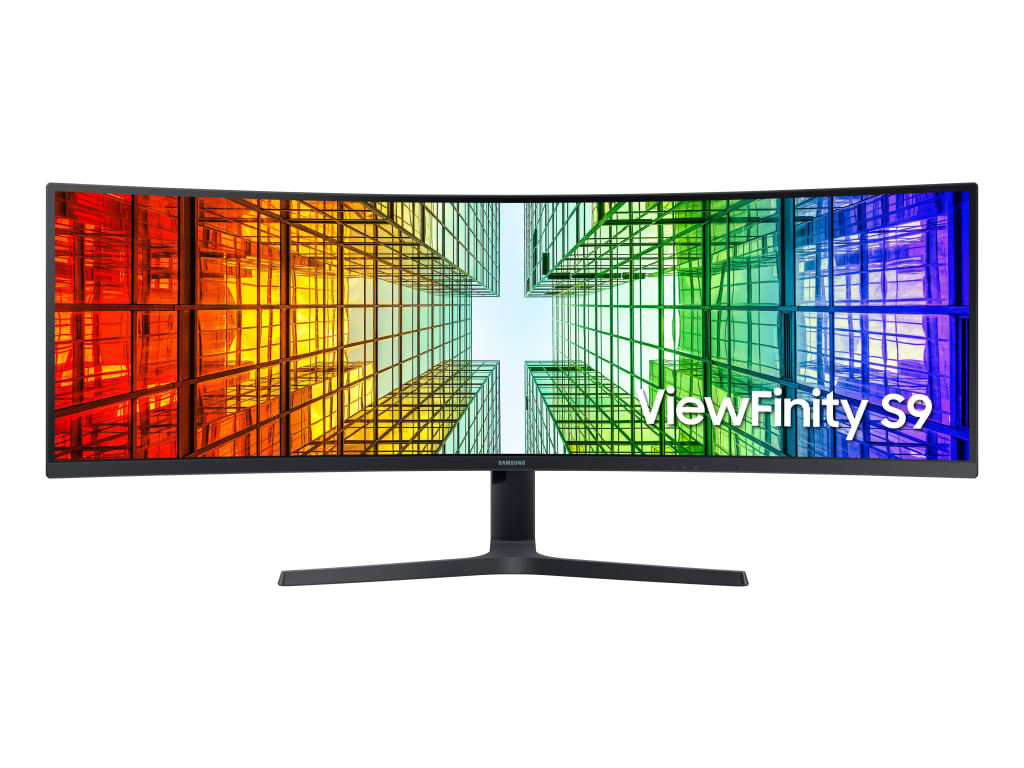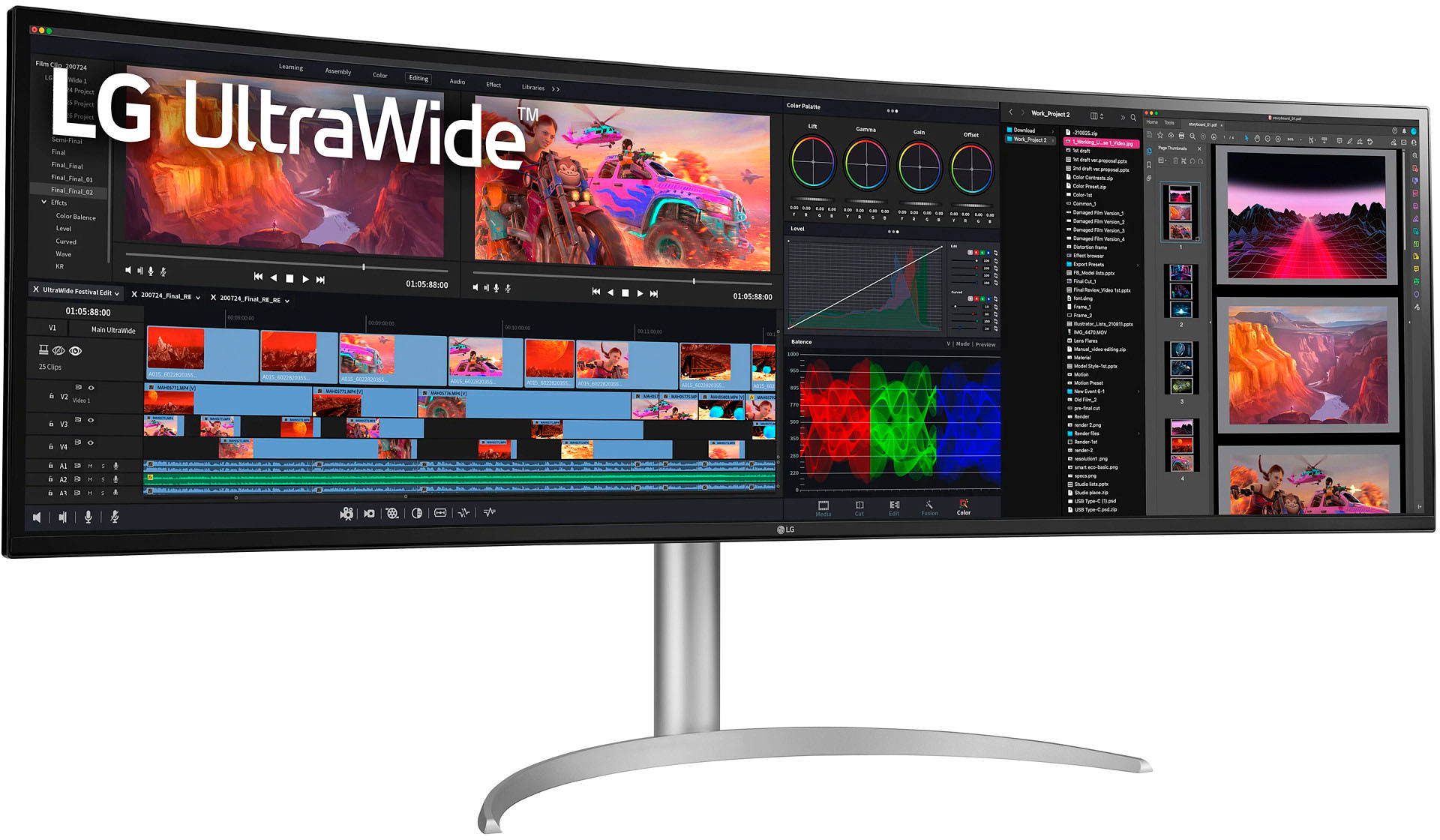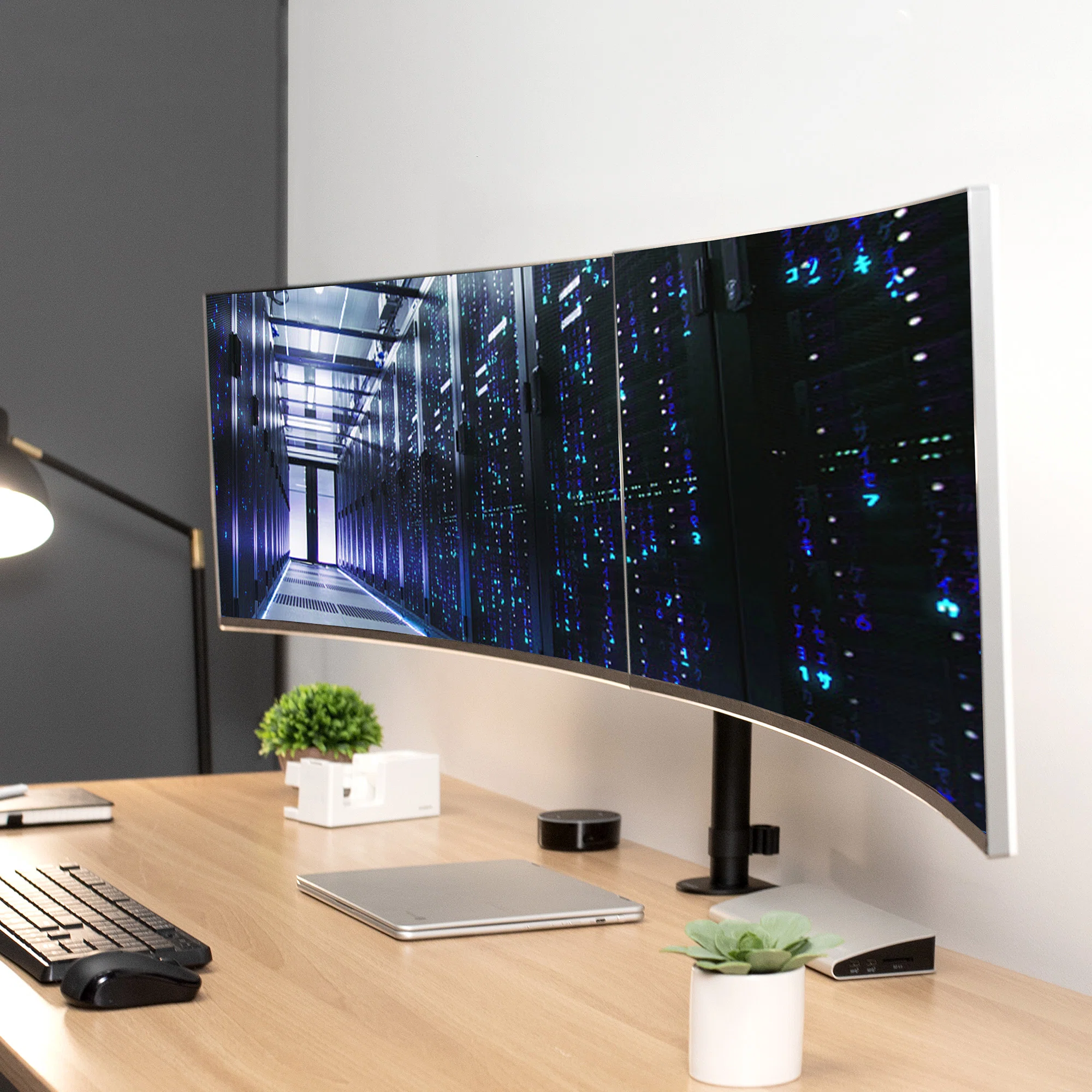Enhancing productivity and creating a visually appealing workspace can significantly affect your comfort and efficiency levels. Dual curved monitors provide an immersive viewing experience and extend your digital workspace, allowing for better multitasking and less eye strain. If you’re looking to upgrade your computer setup, integrating dual curved monitors might be the way to go. This guide helps you navigate the process, from selecting the right monitors to optimizing your workspace for the best results.
Selecting The Right Curved Monitors
Considering Size and Resolution
When creating a dual monitor setup, size and resolution are crucial. Larger monitors provide more screen real estate, but they also require ample desk space. For resolution, Full HD (1920×1080) could suffice for general tasks, but higher resolutions like QHD (2560×1440) or 4K (3840×2160) offer sharper details and more workspace. Ensure that the monitors you choose have consistent size and resolution for a seamless experience.
Comparing Curvature and Aspect Ratios
Curved monitors vary in their degree of curvature, measured in ‘R’. A smaller ‘R’ number indicates a more pronounced curve. Depending on how close you sit to your monitors, you might prefer a more or less aggressive curve. Curved monitors also come in different aspect ratios: the standard 16:9, ultra-wide 21:9, or even wider. Ultra-wide monitors might eliminate the need for a dual setup if you prefer a single monitor but still want extensive horizontal space.

Positioning Your Monitors
Ergonomic Placement
Proper monitor placement is key to avoiding neck strain and maximizing visibility. The tops of the monitors should be at or slightly below eye level, with a slight tilt backward. Position the monitors in an arc shape around your seated position to keep them equidistant from your eyes, reducing the need to turn your head excessively.
Adjusting for the Curves
With curved monitors, it’s beneficial to angle them so the curves point toward you. This enhances the immersive feel and minimizes reflections. Ensure there is little to no gap between the two monitors, creating an uninterrupted transition from one screen to the other.

Maximizing Productivity
Leveraging Screen Real Estate
With dual monitors, you have the luxury of extending or mirroring your display. Use one screen for main activities while the other holds your email, chat application, or reference materials. Programs like Microsoft’s FancyZones or macOS’s Mission Control can help organize windows and applications across your extended space.
Tailored Workflow
Customize your setup according to your work habits. If you frequently compare documents, dedicate one monitor to each. If you’re a video editor or graphic designer, spread your timeline or canvas across both screens for a grand view of your project. Find the arrangement that complements your workflow the best.

Overcoming Challenges
Dealing with Desk Real Estate
Curved monitors, especially two of them, can take up significant desk space. Monitor arms or stands that support dual setups can save desk space and provide flexibility in monitor positioning. Make sure your desk can accommodate these tools if you choose to use them.
Handling Connectivity Concerns
Ensure your computer has the necessary ports to support dual monitors. You may need HDMI, DisplayPort, or USB-C connections, and not all computers have multiple outputs of the same type. Consider using docking stations or graphic adapters if required, and always use cables that support the resolutions of your monitors to get the best picture quality.

Enhancing Your Workspace Aesthetics
Cable Management
Keep your workspace tidy by managing cables neatly. Use cable sleeves, clips, or ties to bundle wires together and route them behind your desk or along the edges. This not only looks cleaner but also helps prevent tangled cables and potential damage.
Complementing Your Decor
Dual curved monitors instantly give your workspace a modern, tech-forward appearance. Choose monitor frames and stands that blend with your decor, and consider ambient lighting, such as LED strips behind the monitors, to reduce eye strain and add a cool factor to your setup.

Streamlining Workflow with Advanced Features
Embracing Built-in Technologies
Many curved monitors come equipped with technologies designed to enhance workflow. Features like Picture-in-Picture (PIP) and Picture-by-Picture (PBP) turn a single monitor into a multifunctional tool, enabling users to display content from two different sources simultaneously. This is particularly useful for professionals who need to monitor real-time data feeds while working on another task. Taking the time to understand and utilize these advanced features can create a more dynamic and flexible work environment.
Ensuring Compatibility with Software Tools
To fully benefit from dual curved monitors, verify compatibility with your main software applications. Some programs are optimized for ultra-wide or multi-monitor setups, offering extended toolbars, larger canvases, or the ability to have multiple windows open side-by-side without overlap. This compatibility can significantly impact your productivity, making routine tasks more efficient and less time-consuming. Research and configure software settings to align with your dual-monitor arrangement for an optimized workflow.
Prioritizing Health and Wellbeing
Eye Care and Comfort
Extended screen time can strain your eyes, but many curved monitors feature eye care technologies to mitigate this risk. Look for monitors with blue light filters, flicker-free technology, and anti-glare screens to enhance viewing comfort during long work sessions. Additionally, the natural curvature of these monitors promotes a more comfortable viewing angle, reducing the need to constantly refocus your eyes across a flat, wide display. Incorporating regular breaks using the 20-20-20 rule—every 20 minutes, look at something 20 feet away for at least 20 seconds—can further prevent eye strain and boost productivity.
Posture and Physical Health
An overlooked benefit of a properly set-up dual curved monitor workspace is its positive impact on posture. Because you can angle the monitors to create a more enveloping visual field, there’s less incentive to lean forward or turn your head in awkward angles to see your screens. This encourages a more natural seating position, reducing the risk of neck and shoulder pain. Investing in an ergonomic chair and desk, paired with the flexible positioning of curved monitors, can significantly improve your physical wellbeing in the long term.
In conclusion, upgrading to dual curved monitors promises an outstanding visual workspace that can boost your productivity and enjoyability. While selecting the right monitors, place emphasis on size, resolution, and curvature that match your work and ergonomic needs. Be mindful of potential challenges such as desk size and connectivity, and strive to maintain a workspace that is as aesthetically pleasing as it is functional. With thoughtful setup and organization, your work environment will not only cater to higher efficiency but also become a space you’ll appreciate for both comfort and style.